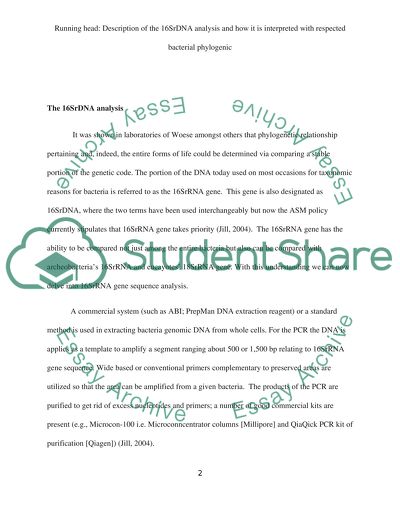Describe the 16SrDNA analysis and how it is interpreted with respected Essay. Retrieved from https://studentshare.org/biology/1498503-describe-the
Describe the 16SrDNA Analysis and How It Is Interpreted With Respected Essay. https://studentshare.org/biology/1498503-describe-the.


